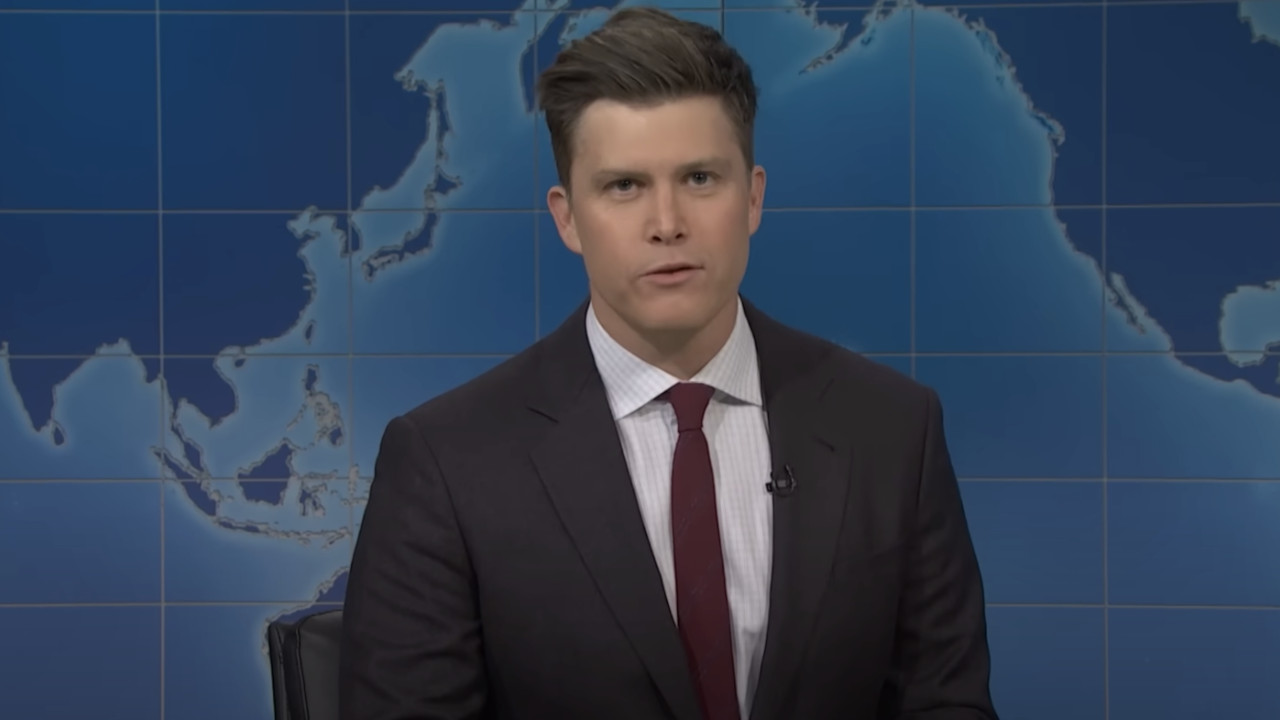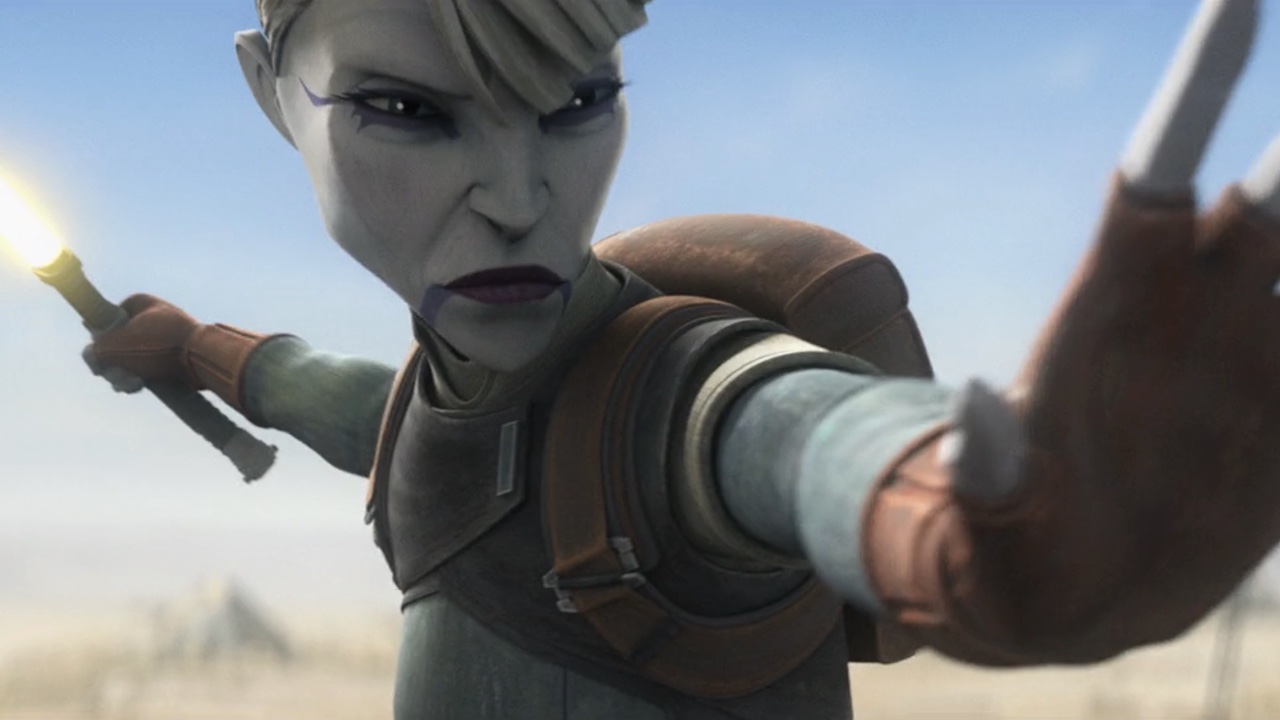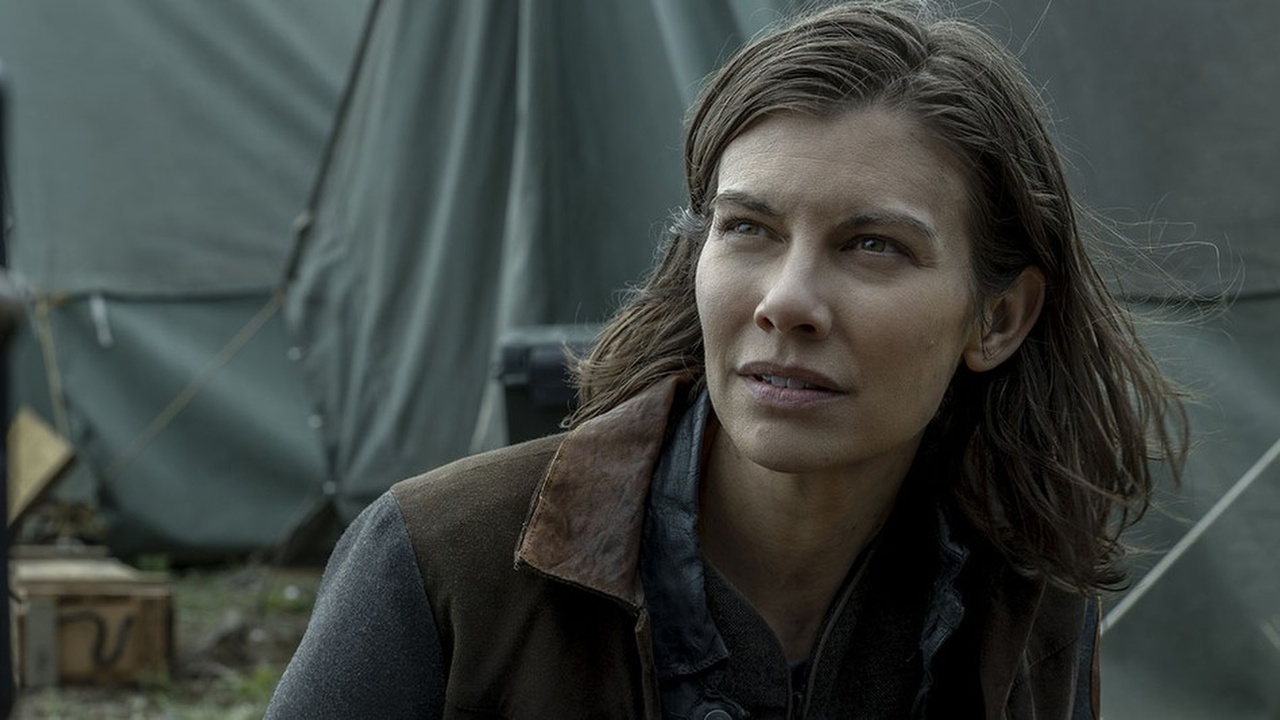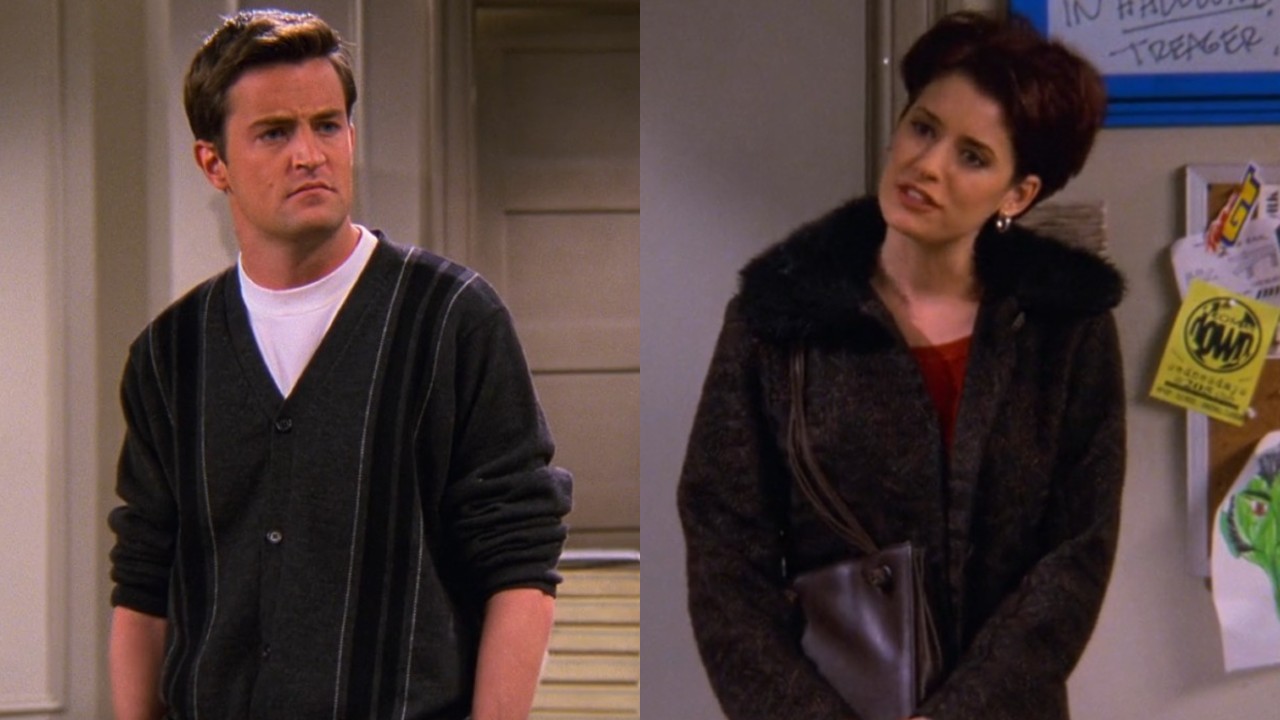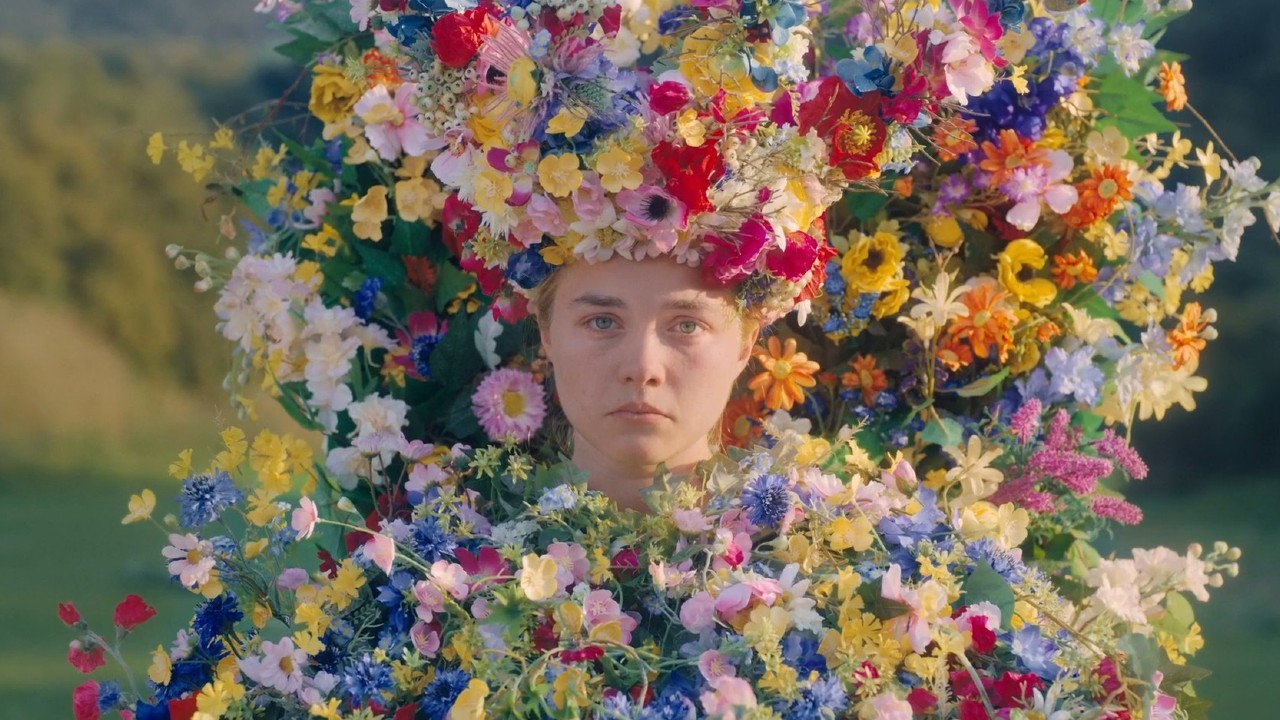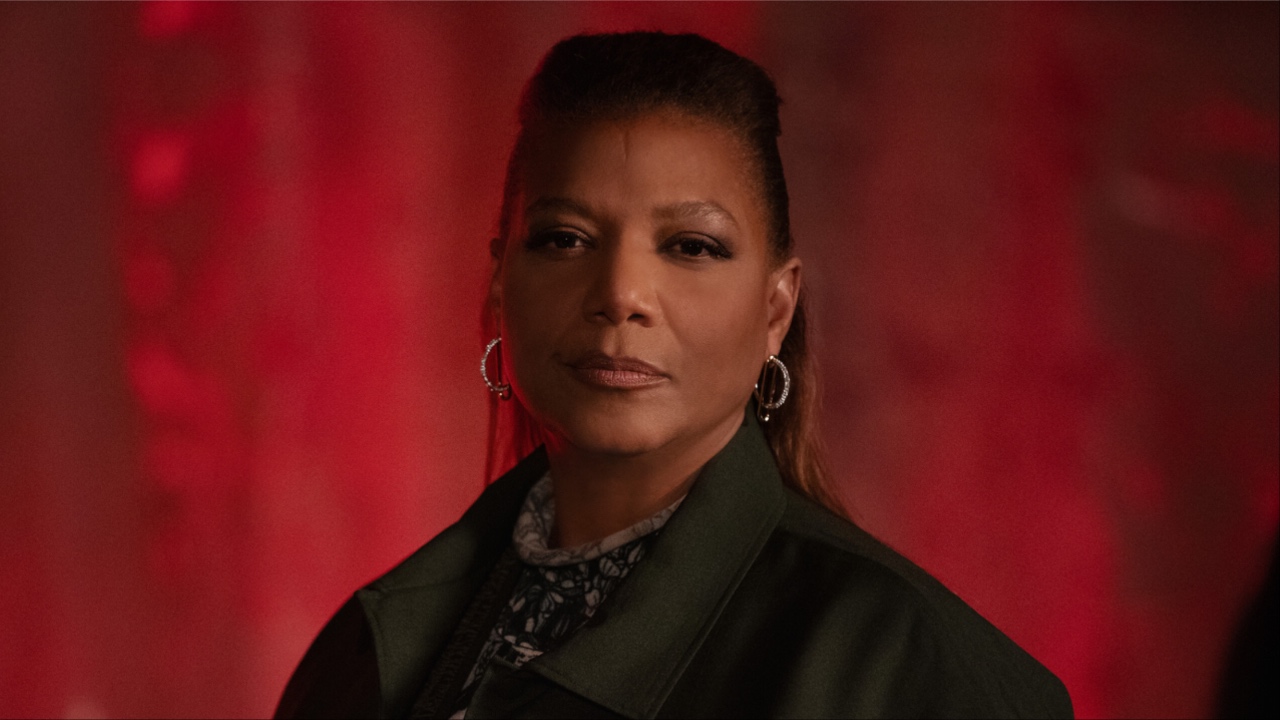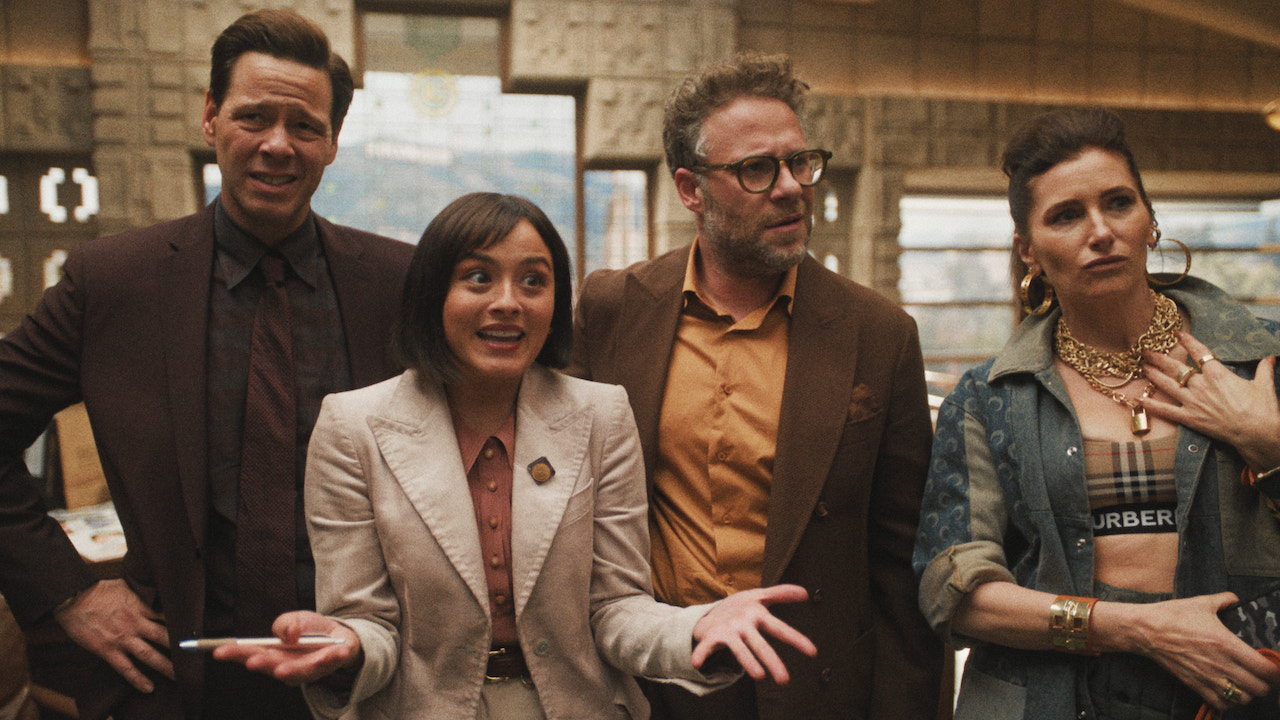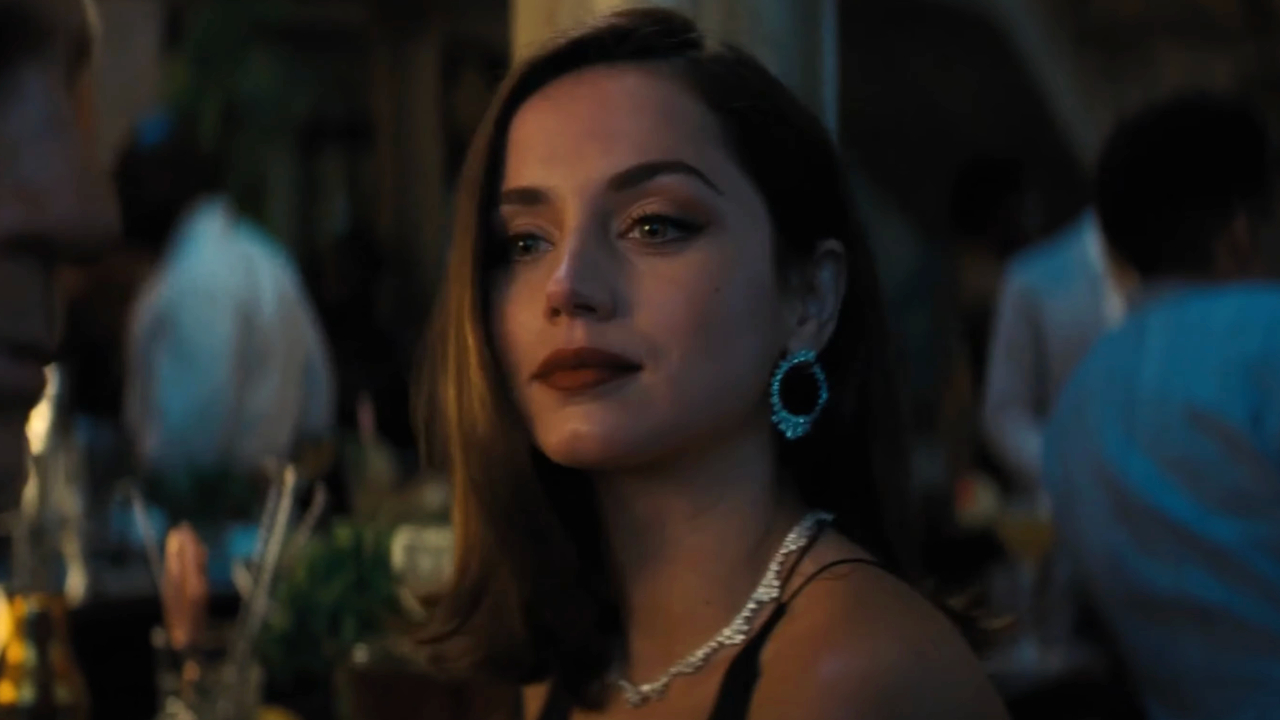Tokyo’s 2021 Olympics Opening Ceremony Pictogram Performance: The Fascinating Story Behind The Show-Stealing Performance
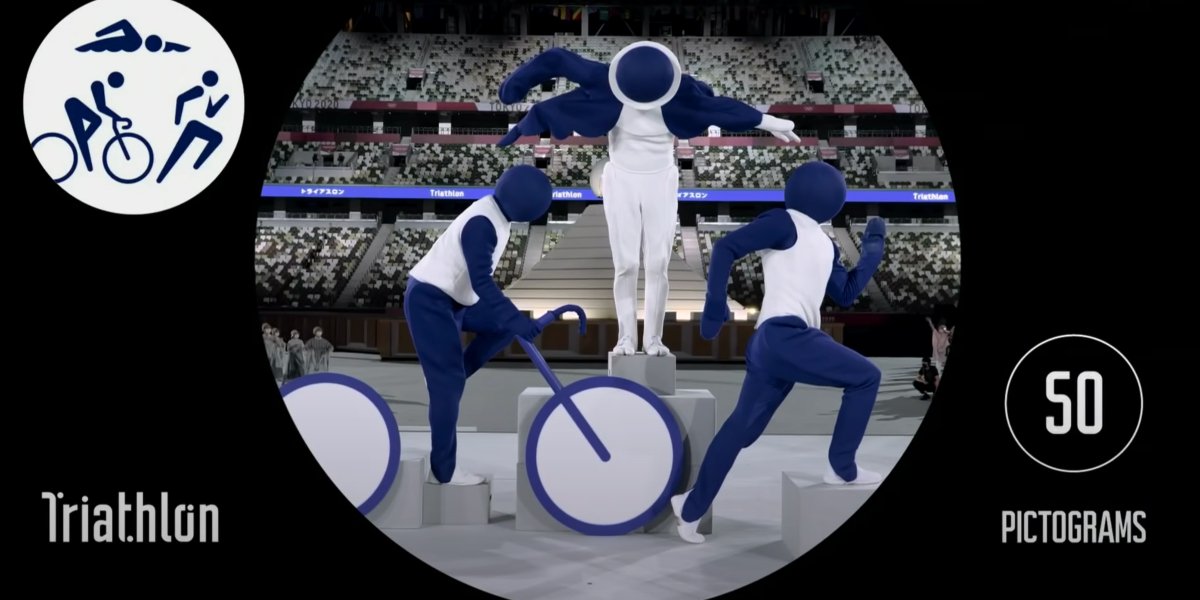
With the Tokyo Olympics being the biggest sporting event and cultural celebration of the year, there are understandably a ton of eyes on every moment of action. But while a lot of people are thirsting over Tonga’s shirtless flag bearer or the next great Olympic story, a lot of the attention throughout the games has been on the amazing pictogram performance during the 2021 Tokyo Olympics opening ceremony and how the show-stealing spectacle transfixed viewers around the world.
Over the course of five minutes, a group of talented performers brought to life the 50 different Olympic disciplines in a fun and exciting manner that, like the Olympic pictograms themselves, bridged the language barrier and became something everyone could enjoy no matter where they’re from. There is a chance, however, that not everyone knows the fascinating story behind the pictograms and why the 2021 Olympics opening ceremony performance was such a big deal. Let us explain…
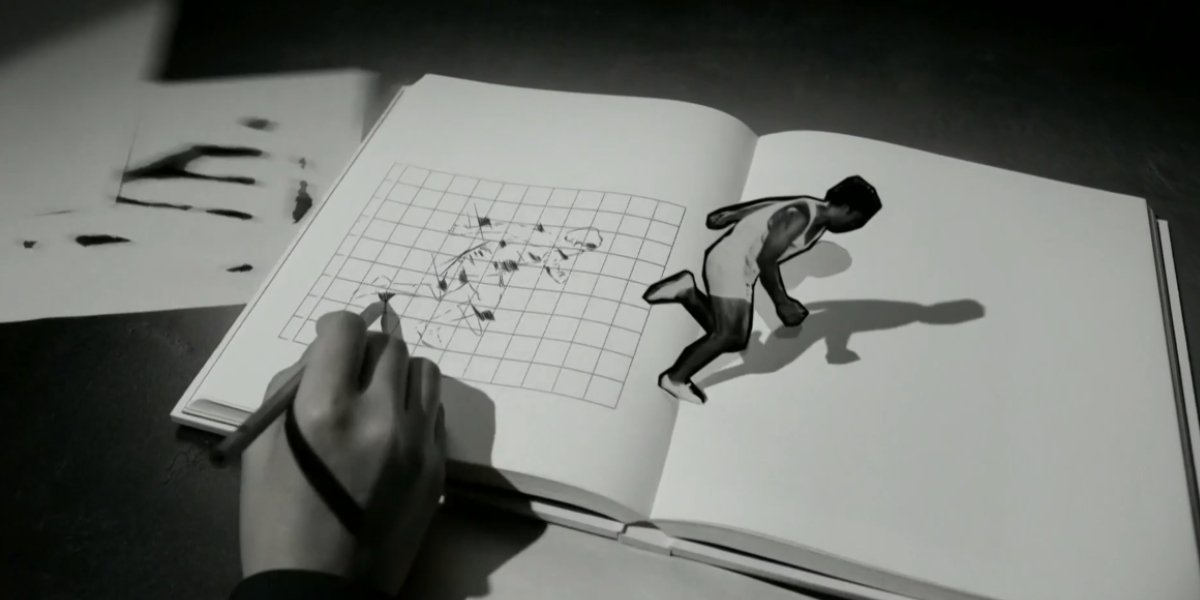
Olympic Pictograms Are Nearly As Old As The Modern Version Of The Summer Games
Olympic pictograms really took off at the 1964 Tokyo Summer Games (more on that in a bit), but the use of symbols instead of letters and words at the international sporting event goes back as far as nearly 50 years before that when they were used (in a smaller capacity) in Stockholm in 1912 and again in Paris 1924, as International Society of Olympic Historians Secretary-General Markus Osterwalder told Olympics.com in 2019.
These small pictograms used back in the early 20th Century weren’t the simple and easy-to-understand or widely-used graphics we are used to now but were still used to serve the same purpose: help people better understand sporting events without speaking the local language, said Markus Ostewalder, who first took up an interest in Olympic graphic design in the early 1990s.
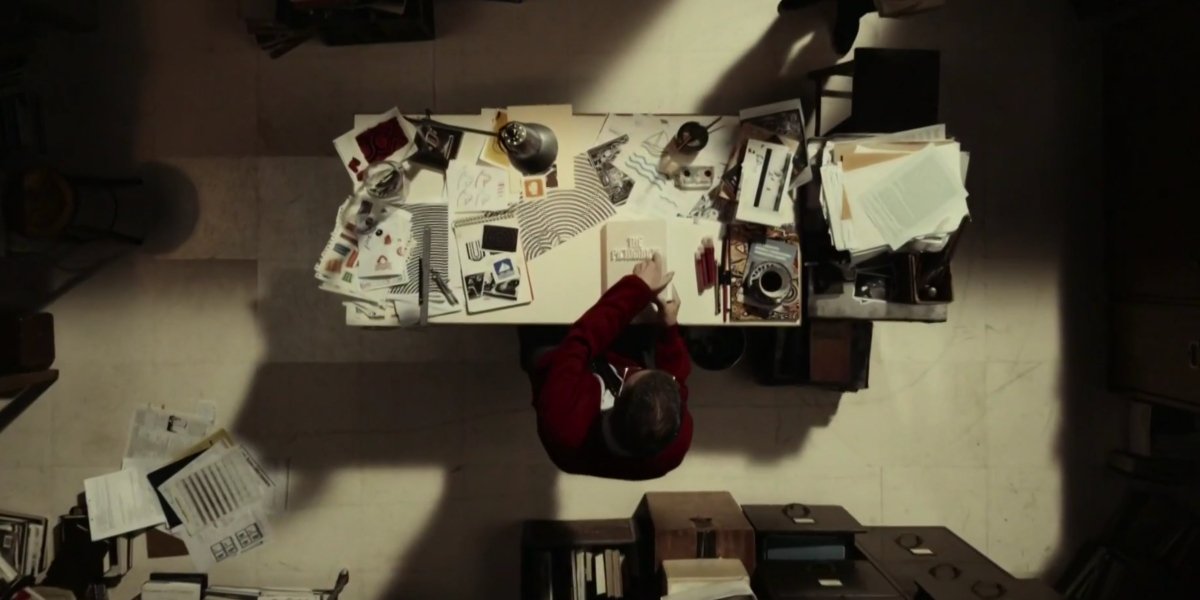
Olympic Pictograms As We Know Them Were Introduced For The 1964 Tokyo Games To Bridge The Language Gap
Olympic pictograms were also used at the 1948 Summer Olympics as a series of illustrations for each event but they weren’t used as a full-on communication tool until the 1964 Tokyo Olympics for one fairly simple reason: not many people outside of Japan spoke Japanese. According to a 2012 Smithsonian Magazine article, the team of designers behind the Tokyo pictograms took the design to the next level by creating a system of typography, colors, and symbols that were then applied across all communication platforms at the games.
This team, which was led by Katsumi Masaru, took inspiration from a design language called isotype that was created by Otto Neurath and Gerd Antz. This infographic form, which includes approximately 4,000 signs and shapes, is still used today and continues to influence graphic design as a whole. Through the practice of this design philosophy, Japanese team created nearly two dozen simple, clean, and easy to understand pictograms that helped lead athletes and spectators to events and around the Olympic grounds.
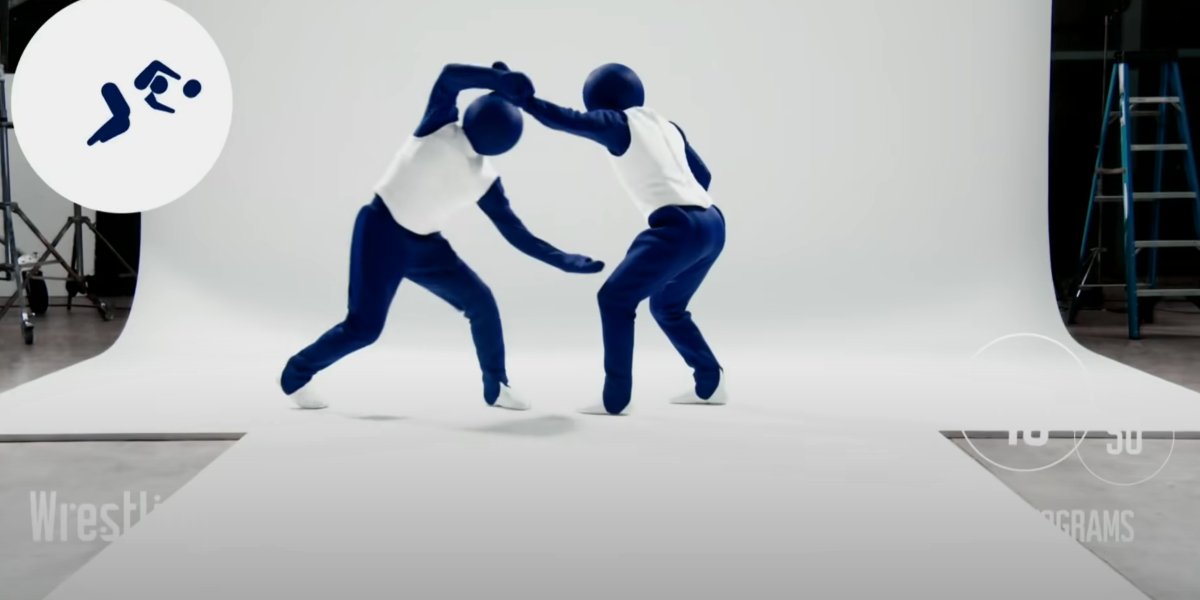
Pictograms Have Gone On To Become A Part Of Everyday Life
The design work that largely took off with the 1964 Tokyo Olympics was further expanded eight years later for the 1972 Munich Summer Games thanks to the work of German designer Otl Aicher. In 2014, Public Radio International ran a profile on Olympic design and how it has influenced everyday life in the past 50 years, and a large chunk was dedicated to the 1972 Olympics, the first to be held in Germany since 1936 when it was held in Berlin with Nazi iconography all over the place. Eager to erase this image, the German Olympic Committee called on Aicher to do just that, and he did.
CINEMABLEND NEWSLETTER
Your Daily Blend of Entertainment News
These basic designs, which featured simple stick figures depicting the various Olympic sports, lacked agenda and provided athletes and spectators with a wordless language that welcomed all to the games. These designs would lead to the creation of icons we now see in public restrooms, those used by the Department of Transportation, and just about everywhere else in public life. So, when you’re looking for a restroom or trying to find your way around a subway station, thank the Olympics.
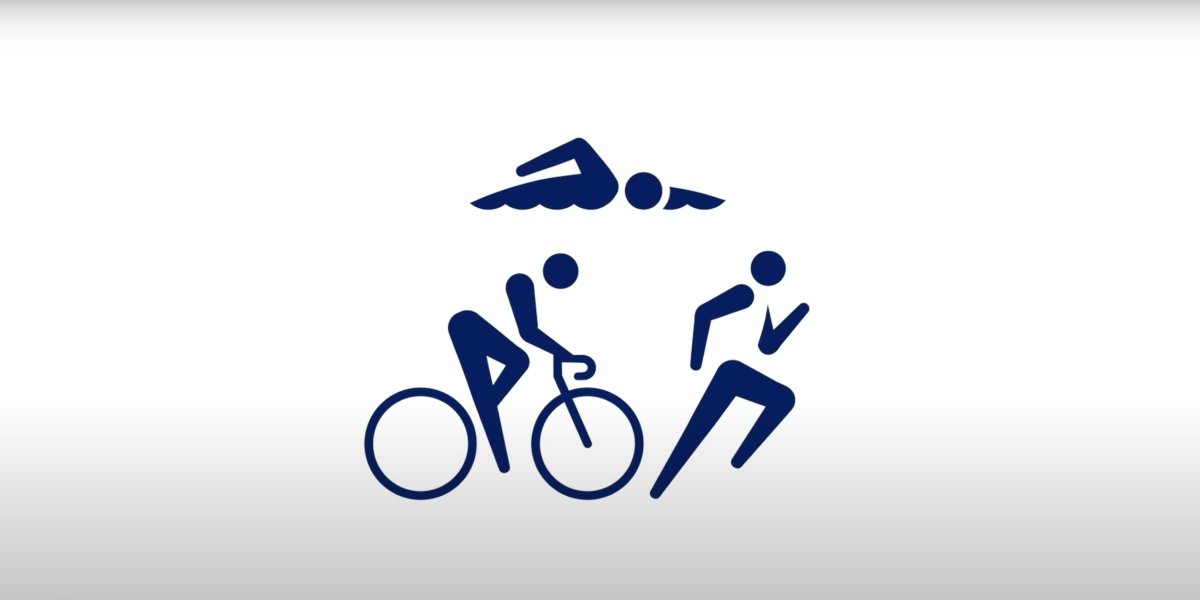
The 50 Pictograms Replicated At The Tokyo 2020 Opening Ceremony Were Unveiled In 2019
The 50 pictograms depicting the 33 sports from the Tokyo 2020 Games were unveiled by the Tokyo Organizing Committee of the Olympics and were said to be in line with the promise of “innovation and harmony,” according to Olympics.com. Playing off the design and philosophy of the Tokyo 1964 pictograms, designer Masaaki Hiromura and his team spent two years trying to achieve this, and as you can tell, they pulled it off beautifully. The designers set out to create pictograms that displayed the vibrant movements of the athletes in addition to communicating information for everyone involved with the games that were postponed a year.
As we saw in the 2021 Tokyo Olympics opening ceremony and its fun display of these pictograms, Masaaki Hiromura and the other artists who created the pictograms achieved their goal and then some. Speaking of the performance itself…
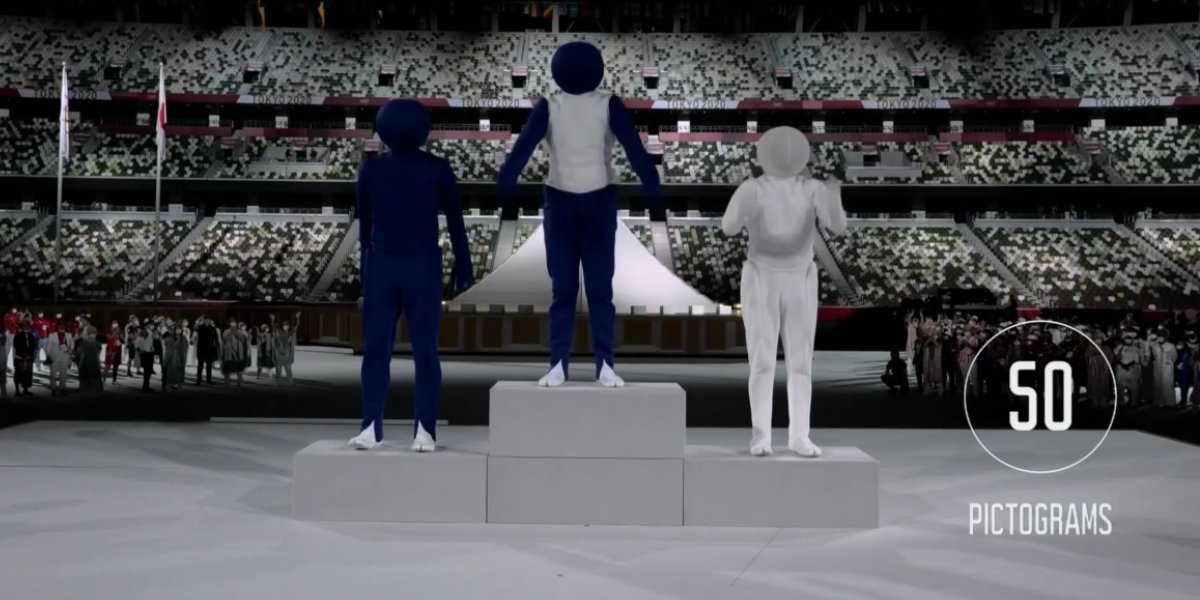
The Pictogram Performers Are Famous Japanese Silent Comedy And Pantomime Artists
Near the end of the 2021 Tokyo Olympics opening ceremony, after the parade of nations, Olympic organizers officially kicked off the Summer Games, athletes in attendance and countless viewers around the world were treated to perhaps the most charming and inventive display: human pictograms. The five-minute performance, which surprisingly only featured one mess-up (badminton), was brought to life by a trio of Japanese performers well-known in their native Japan.
The main pictogram model featured throughout the fun-loving skit was Hiroshi Yoshimi, better known as HIRO-PON, a member of the award-winning performance group Gamarjobat who has made a name for himself with his unique brand of miming and physical comedy, per Olympics.com. HIRO-PON was joined by the pantomime duo known as Masa and Hitoshi, or Daisuke Minami and Ryo Matsumoto, individually. HIRO-PON even showed up at the post-ceremony press conference still wearing his blue pictogram suit.
Well, now you know the history of Olympic pictograms, how they have become a part of everyday life for large portions of the planet, and how they unite the athletes and spectators with their universal language and design. Hopefully all of this leaves you with a greater appreciation of charming performance we all saw at the opening ceremony. And if you somehow missed out on the show, you can still watch the 2021 Olympics opening ceremony streaming.

Philip grew up in Louisiana (not New Orleans) before moving to St. Louis after graduating from Louisiana State University-Shreveport. When he's not writing about movies or television, Philip can be found being chased by his three kids, telling his dogs to stop barking at the mailman, or chatting about professional wrestling to his wife. Writing gigs with school newspapers, multiple daily newspapers, and other varied job experiences led him to this point where he actually gets to write about movies, shows, wrestling, and documentaries (which is a huge win in his eyes). If the stars properly align, he will talk about For Love Of The Game being the best baseball movie of all time.

